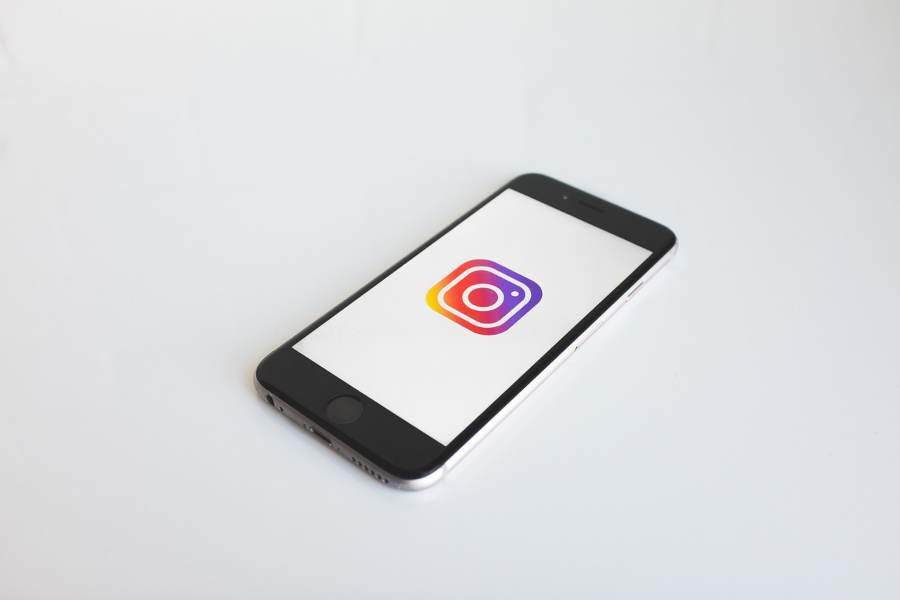When Did Instagram Come Out? Full Timeline & Insights

When did Instagram come out? This question is frequently asked by those curious about the platform’s history, especially given Instagram’s massive impact on digital culture. What began as a photo-sharing app for iOS users has since evolved into a global social media powerhouse. This article provides a comprehensive timeline, key developments, and essential facts about the launch of Instagram, including its launch date, growth milestones, and acquisition by Facebook (now Meta).
Whether you’re a digital marketer, social media enthusiast, or someone interested in tech history, understanding when Instagram came out offers insight into the evolution of mobile apps and how visual content has redefined online engagement. This deep dive into Instagram’s timeline will answer not only when did Instagram come out, but also how it gained such widespread popularity and became a cornerstone of modern online life.
When Did Instagram Come Out?
Instagram officially came out on October 6, 2010, as a free photo-sharing application for iPhone users. It was created by Kevin Systrom and Mike Krieger and gained 25,000 users within just 24 hours.
Why Burbn’s Failure Sparked the Launch of Instagram
Instagram officially came out on October 6, 2010, but its journey began earlier as a pivot from a different app called Burbn. Co-founder Kevin Systrom initially developed Burbn as a location-based check-in app that also included features for photo sharing, but it quickly became overloaded and lacked focus. Recognizing this, Systrom and Mike Krieger, his collaborator, decided to simplify the concept by stripping it down to its most engaging element—photo sharing. This refinement laid the foundation for what would soon become known as Instagram.
At the time, smartphone cameras were rapidly improving, and users were eager for visually immersive experiences. Instagram launched at the perfect moment, offering quick photo uploads, filters that made images look polished, and an intuitive mobile interface. It was an instant hit—25,000 users signed up on the first day, reaching 1 million within two months.
Amid this early growth, tools like an Instagram profile viewer began to gain traction, as users became increasingly interested in exploring content from public profiles without necessarily following them. This reflected how the platform was shaping the norms of curiosity and interaction online.
Initially available exclusively on iOS, this exclusivity helped build anticipation and buzz, particularly among Android users. When the Android version launched in April 2012, the app’s popularity exploded. Just days later, Facebook acquired Instagram for $1 billion. Instagram wasn’t just another photo-sharing app—it marked a cultural and technological shift, driven by simplicity, timing, and visual appeal.
How Did Instagram Grow After Its Initial Launch?
Rapid User Growth After Launch
After Instagram came out in October 2010, its growth was nothing short of phenomenal. Within a year, the platform surged from one million to ten million users. This rapid adoption was driven by its minimalist design, engaging photo filters, and easy sharing functionality. Word of mouth played a significant role, as did its visibility on the App Store and favorable press coverage from influential tech publications.
Android Launch Opened the Floodgates
A significant milestone was reached in April 2012 with the launch of Instagram on Android. The response was overwhelming, with over one million downloads in the first 24 hours. This move significantly expanded the app’s reach beyond Apple devices, helping to establish its global presence. Android users had long awaited access, and their demand helped accelerate Instagram’s trajectory toward mass adoption.
Facebook Acquisition Fueled Strategic Growth
Just days after the Android rollout, Facebook acquired Instagram for $1 billion. This acquisition positioned Instagram as a major player in the social media landscape. Backed by Facebook’s resources, the platform gained scalability, improved infrastructure, and tighter integration with other social tools, propelling its expansion even further.
Feature Evolution: From Photos to Full Multimedia
Over the years, Instagram has introduced several transformative features. Stories arrived in 2016 to compete with Snapchat, followed by IGTV in 2018, which offers long-form video content. In 2020, Instagram introduced Reels, offering a TikTok-style format for short videos. These additions diversified the platform’s appeal and kept users engaged.
Cultural Influence and the Rise of Influencers
Instagram’s impact went beyond technology—it reshaped culture. It became the birthplace of the influencer economy, allowing creators, celebrities, and brands to build visual narratives, market themselves, and connect directly with millions. The way people communicate, shop, and discover trends changed forever.
Instagram’s Evolution: Key Milestones That Shaped the Platform
Instagram’s rise to global dominance wasn’t accidental — it was built on a series of well-timed innovations and strategic moves that transformed it from a simple photo app into a complete multimedia platform. Below are the defining milestones that shaped its evolution:
- October 2010: Instagram Launches on iOS
The platform debuted exclusively for iPhone users, offering photo filters and a simple, visually driven interface. Within 24 hours, it had over 25,000 sign-ups. - April 2012: Android Version Released
After months of anticipation, Instagram was made available to Android users. It surpassed one million downloads in under 24 hours, marking a huge step in user growth and accessibility. - April 2012: Facebook Buys Instagram
Shortly after the Android launch, Facebook acquired Instagram for $1 billion, signaling the beginning of deeper integration and future monetization strategies. - June 2013: Introduction of Video Sharing
Instagram expanded beyond still images, allowing users to post 15-second videos, which later evolved into longer content options. - August 2016: Instagram Stories Debut
Borrowing from Snapchat’s format, Instagram Stories enabled users to share temporary content, which quickly became one of the app’s most-used features. - June 2018: IGTV for Long-Form Video
IGTV gave creators the ability to post videos up to an hour long, positioning Instagram as a competitor to YouTube. - August 2020: Launch of Reels
Reels offered a short-form video format to compete with TikTok, keeping Instagram relevant to younger audiences and video creators.
Why Did Instagram Become So Popular So Quickly?
Instagram’s explosive rise in popularity can be traced to a combination of innovative design, perfect timing, and social relevance. When Instagram launched, it was uniquely built as a mobile-first platform at a time when smartphones were rapidly becoming mainstream. This gave it a distinct edge over web-centric competitors, such as Facebook. Unlike Twitter, which focused on short text updates, Instagram was a visual-first platform, providing users with an immediate and immersive photo-sharing experience.
The app’s simplicity was a game-changer. Users could take a photo, apply a stylish filter, and post it within seconds. There were no complicated settings or overwhelming features—just a streamlined interface that made sharing beautiful images easy and fun. The availability of high-quality filters helped elevate even average photos, appealing to both creatives and casual users.
Early adopters, strong word-of-mouth marketing, and the rise of mobile photography further accelerated its growth. Instagram also encouraged discovery through hashtags and follower-based connections, fostering a tight-knit and engaging community. It wasn’t the first photo-sharing app, but it was the first to get everything just right.
When Did Instagram Launch and How Has It Evolved Since Then?
Instagram launched on October 6, 2010, and since then, the platform has undergone significant changes. From a minimalist photo app to a full-fledged multimedia and commerce ecosystem, here’s how Instagram has evolved:
- The Early Days of Instagram: At its launch, Instagram featured a retro camera icon and offered only basic photo-sharing capabilities, accompanied by a limited set of filters. Its interface was clean, fast, and highly intuitive, which helped it stand out in a crowded app market. Users loved its simplicity and visual focus.
- Expansion Into Video and Stories: To stay ahead of competitors like Snapchat and TikTok, Instagram introduced video posts in 2013, followed by Stories in 2016. These features added new dimensions to user interaction, allowing for more dynamic, temporary, and expressive content. In 2020, Reels further expanded Instagram’s presence in the short-form video space.
- Deeper Integration with Facebook: Following its acquisition by Facebook in 2012, Instagram gradually adopted features such as Facebook login, unified ad targeting, Messenger integration, and post cross-sharing, thereby becoming part of a broader social media ecosystem.
- Rise of Instagram Shopping and Business Tools: Instagram transformed into a shopping and business hub. With features like product tags, in-app checkout, and creator monetization tools, it now supports e-commerce, influencer marketing, and brand visibility.
- Shift to Algorithmic Feed and Mixed Reactions: Instagram’s chronological feed was replaced with an algorithm-based feed, prioritizing engagement and relevance. While it boosted time spent on the app, many users expressed frustration over reduced organic reach and transparency.
Final Thoughts
Knowing when did Instagram come out helps us understand how a simple idea evolved into one of the world’s most influential platforms. Launched on October 6, 2010, Instagram began as a minimalist photo-sharing app but rapidly transformed into a hub for visual communication, branding, and e-commerce. Its journey—from exclusive iOS beginnings to Android expansion, Facebook acquisition, and the rollout of Stories and Reels—highlights the importance of innovation and adaptability in the tech industry. Each phase in its evolution reflects Instagram’s focus on user experience and cultural trends. Understanding when Instagram came out isn’t just about a date—it’s about the beginning of a platform that changed how we connect and express ourselves online.
FAQ’s
Q. When did Instagram come out officially?
A. Instagram officially launched on October 6, 2010, as a free photo-sharing app for iPhone users. It attracted 25,000 users on its first day, signaling instant popularity.
Q. Who founded Instagram and why?
A. Instagram was founded by Kevin Systrom and Mike Krieger, who aimed to create a simple, engaging platform that made photo sharing beautiful and effortless for mobile users.
Q. When did Facebook buy Instagram?
A. Facebook acquired Instagram in April 2012 for around $1 billion, just days after the Android version launched, recognizing its rapid growth and user engagement.
Q. What platform was Instagram originally available on?
A. At first, Instagram was exclusively available for iOS users. This early exclusivity built hype and allowed the app to develop a strong, focused user base.
Q. Why was Instagram successful so quickly?
A. Instagram’s success was driven by its mobile-first design, ease of use, and visually appealing filters, all of which were combined with the perfect timing in the rise of mobile photography and social sharing.
